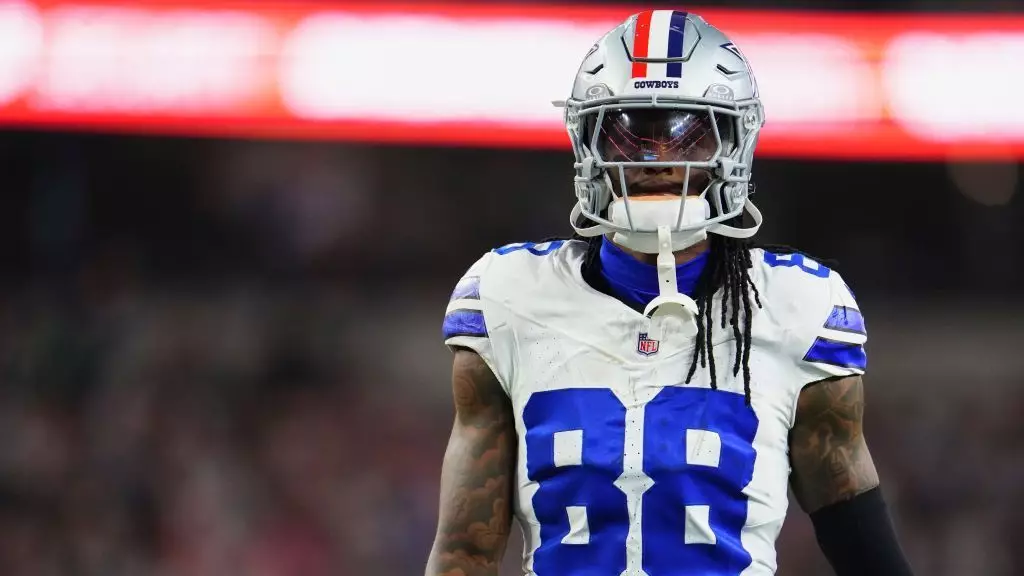The Dallas Cowboys, a prominent fixture in the National Football League (NFL), faced a significant setback in their recent matchup against the Philadelphia Eagles. A disheartening 34-6 loss has led to considerable scrutiny over the team’s performance and, unusually, the impact of an underrated adversary: the sun. In this article, we will dissect the events of this game, especially focusing on how environmental factors can influence the outcome, ownership accountability, and potential changes to mitigate such occurrences in the future.
During the showdown against the Eagles, the Cowboys found themselves trailing 7-3, and a golden opportunity arose when quarterback Cooper Rush threw a pass intended for receiver CeeDee Lamb, positioned optimally in the end zone. Unfortunately for the Cowboys, Lamb was momentarily blinded by the glaring sun, resulting in a missed touchdown and instead forcing the team to settle for a field goal. This choice, though tactically valid under normal circumstances, proved disastrous as the team failed to score any further points, leading to a comprehensive defeat.
The scenario underscores not only the importance of making pivotal plays count but also how external factors like sunlight can dramatically alter the course of a game. Critics might argue that a single missed touchdown in a high-stakes game shouldn’t dictate the entire outcome, but it serves as a reminder of the influence that seemingly trivial aspects can have in the sporting arena.
Cowboys owner Jerry Jones faced the media post-game and remarkably touched on the sunlight as a noteworthy issue for his team. Rhetorical questions about installing curtains to block the sun were met with sarcasm, demonstrating Jones’s reluctance to entertain drastic changes for a problem he perceives as part of the game. His comments, “We do know where the damn sun’s going to be at our own stadium,” reflect a firm stance on maintaining the status quo and an unwillingness to reconsider existing solutions.
“Why not put up curtains?” a reporter asked, to which Jones responded dismissively. While his frustration can be understood, it raises questions about responsibility and adaptation as an owner. Are teams not bound to leverage every opportunity to improve, considering the financial stakes involved?
One of the most compelling inquiries that arise from Jones’s comments is whether the Cowboys should reconsider their approach to tackling the challenges of environmental factors in football. The team does not practice at AT&T Stadium, which could limit their adaptability to the natural elements they face during matches. Should coaching staff, including head coach Mike McCarthy, anticipate these conditions and adjust play-calling and strategy accordingly?
While discussing the impact of the sun, it is essential to explore why the Cowboys have not taken advantage of past experiences to address this issue decisively. Other venues have experimented with techniques to shield players from environmental challenges. While curtains may seem an extravagant solution to some, embracing modernity and innovation could yield significant benefits during critical games. The intention is not to transform the architectural integrity of the stadium but to enhance game-day conditions…
For players like CeeDee Lamb, the incident could not be more straightforward. When asked whether he’d endorse the idea of installing curtains, he affirmed with 1,000% agreement, indicating the severity of the disruption caused during gameplay. The disconnect between management and player experience highlights a fundamental issue: when will the conversations about environmental challenges move from rhetoric to actionable solutions?
Lamb’s acknowledgment that he would not feel comfortable addressing this with Jones encapsulates the challenges players often face—aiming to perform at peak levels while managing unpredictable factors beyond their control. While it may not be Lamb’s job to bring these concerns to management’s attention, it undeniably affects his performance, as well as that of his teammates.
The Dallas Cowboys’ situation isn’t entirely unique; other teams encounter similar difficulties in various other stadiums. The reaction towards environmental factors varies dramatically across teams, and yet, the reluctance to prevent distractions such as sunlight is prevalent. Could it be time for franchises to conduct a deeper assessment of their operational environments, ensuring all possible conditions are monitored and managed effectively?
Ultimately, while the Cowboys’ current challenges related to sunlight may have seemingly minimal consequences, they present opportunities for improved practices and innovations that could revolutionize the way games are played in Texas and beyond. In an industry as competitive as the NFL, overlooking any facet—even something as capricious as the sun—could prove detrimental to a team’s aspirations. The time for action is now.


Leave a Reply